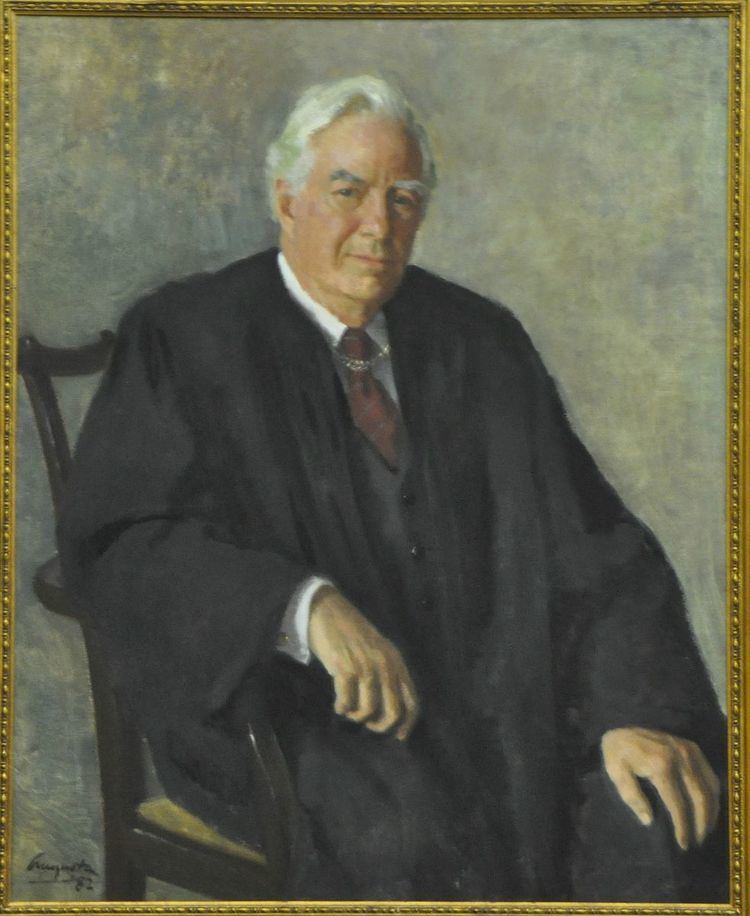Established 1969 Country United States | Dissolved 1986 No. of positions 9 | |
 | ||
Location Supreme Court BuildingWashington, D.C. | ||
The Burger Court refers to the Supreme Court of the United States from 1969 to 1986, when Warren Burger served as Chief Justice of the United States. Burger succeeded Earl Warren as Chief Justice after the latter's retirement, and Burger served as Chief Justice until his retirement, at which point William Rehnquist was nominated and confirmed as Burger's replacement. The Burger Court has been described as a "transitional" court which continued the liberal legacy of the Warren Court but transitioned into the more conservative Rehnquist Court. Burger remained a symbol of the conservative "retrenchment" promised by President Richard Nixon in the 1968 election, but Burger was often overshadowed by the liberal William Brennan and the more conservative William Rehnquist. The Burger Court had a less generous interpretation of the protections offered by the Fourth Amendment and the Fifth Amendment than those of the Warren Court, but the Burger Court did not overrule any of the major precedents set by the Warren Court.
Contents
Membership
In 1969, President Richard Nixon appointed Warren Burger as the replacement for the retiring Earl Warren. Warren had attempted to retire in 1968, but President Lyndon Johnson's nomination of Associate Justice Abe Fortas as Chief Justice was rejected by the Senate. Fortas resigned from the court in 1969 following an ethics scandal, and Burger was confirmed the next month. The Burger Court thus began with Burger and seven veterans of the Warren Court: Hugo Black, William O. Douglas, John Marshall Harlan II, William Brennan, Potter Stewart, Byron White, and Thurgood Marshall. Nixon attempted to fill Fortas's vacant seat, but Nixon's nominations of Clement Haynsworth and G. Harrold Carswell were both rejected by the Senate. Fortas's replacement, Harry Blackmun, was finally confirmed in 1970; the 391-day vacancy was the longest since the 1860s. Black and Harlan both died in 1971, and Nixon replaced them with Lewis Powell and William Rehnquist. In 1975, Douglas stepped down from the court, and President Gerald Ford appointed John Paul Stevens to replace him. In 1981, Stewart retired, and President Ronald Reagan appointed Sandra Day O'Connor to replace him. O'Connor was the first woman to serve on the Supreme Court. The era of the Burger Court ended in 1986 when Burger retired; Burger was succeeded as Chief Justice by William Rehnquist, who was elevated to the position of Chief Justice by President Reagan.
Chief Justice Associate Justice
Rulings of the Court
The Burger Court issued several notable rulings touching on many aspects of American life. Landmark cases of the Burger Court include:
Judicial philosophy
Though Presidents Nixon, Ford, and Reagan all criticized the rulings of the Warren Court and sought to appoint conservative justices, the legacy of the Warren Court remained strong throughout Warren Burger's tenure as Chief Justice. The Burger Court upheld many of the precedents of the Warren Court, even in regards to due process and criminal law. The latter era of the Warren Court was dominated by liberal justices, but the court shifted to the right early in 1969, following Nixon's appointments. Brennan and Marshall generally took liberal positions, while Stevens (after he replaced the liberal Douglas in 1975), Stewart, and White often took centrist positions, and Rehnquist, Powell, and (to a lesser extent) Burger made up the conservative bloc of the court. During his time on the court, Blackmun shifted from the right towards the center, allowing liberals to claim more victories as the 1970s continued. However, the conservatives on the court were strengthened in 1981 when Stewart was replaced by the more conservative O'Connor. Nonetheless, Justice Brennan was often credited for winning the votes of the more centrist judges with his intellectual leadership. The large number of moderates on the court and the resulting decisions gave the court a paradoxical reputation for being both conservative and liberal. Though Burger was often overshadowed by the intellectual leadership of Brennan and Rehnquist, he earned a reputation as important judicial administrator who helped to create institutions such as the National Center for State Courts. Burger also often questioned the need for a judicial remedy in cases; Burger was a strong believer that courts could not cure all injustices, and Burger was not reluctant to limit the standing of plaintiffs.
